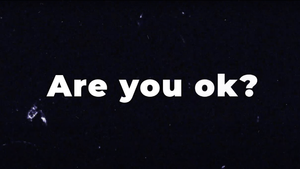We often measure health by one question: “Will it kill me?” But the truth is, what doesn’t kill us can still restrict us. Most people are living longer, but with more disability, dysfunction, and daily restriction.
That’s the hidden cost of the “red zone.” Mortality is obvious. What’s less obvious is the quiet suffering of living decades with back pain, depression, fatigue, or blood pressure that never quite settles.
The Illusion of “Okay”
In the orange zone, people believe they’re healthy. They work, pay bills, get by. But look deeper:
- Overweight is seen as normal.
- Tired all the time? Normal.
- Stiff neck, sore back, brain fog? Normal.
- Living on processed food, caffeine, or alcohol just to get through the day? Normal.
The problem is, most people have never truly felt what good health feels like. You only know how heavy your body was carrying you when you finally put the weight down. I learned this the hard way—losing my health, and then the joy of regaining it.
The Hidden Burden of Disease
The World Health Organization tracks this in DALYs and YLDs:
- DALYs (Disability Adjusted Life Years): Years of healthy life lost to premature death or disease.
- YLDs (Years Lived with Disability): Years lived in a restricted, less-than-optimal state.
One DALY = one year of healthy life lost.
One YLD = one year lived in dysfunction.
Here’s the confronting truth:
95% of the world’s population has health problems—over one third with more than 5 ailments.
— The Lancet
The top 5 global causes of years lived with disability (YLDs) are:
- Lower back pain
- Depression
- Iron deficiency anemia
- Neck pain
- Age-related hearing loss
These are not just “physical” issues. Pain, for example, is not simply in the tissue. It’s an output of the brain, influenced by thoughts, behaviors, stress, environment, and inflammation. Just like you can’t tell a depressed person to “just be happy,” you can’t tell someone with pain to “just move better.” Context matters.
Why So Many Stay Stuck in the Orange Zone
Most of the chronic disease burden in developed countries comes down to 10 risk factors:
- Tobacco & poor air quality
- Poor nutrition & “frankenfoods”
- Physical inactivity & sedentary lifestyles
- Excessive alcohol
- High blood pressure
- Hyperglycemia (high blood sugar)
- Elevated blood fats (lipids)
- Chronic stress
- Isolation & disconnection
- Chemical toxins from degraded environments
These are all modifiable. The challenge? Most people ignore the warning lights on their own dashboard.
Imagine a Dashboard for Your Body
Like a car, your body gives you signals:
- Blood pressure creeping up = orange light.
- Extra weight building = flashing yellow.
- Sleepless nights, dehydration, or stress = warning signs.
You can ignore the lights, but eventually, the engine fails.
The Way Out: From Orange to Green
Here’s the hopeful truth: every one of these risk factors can be addressed. You don’t have to wait for disease.
- Seek baseline measures. See a functional or allied health professional to know your numbers.
- Make small shifts. Corrective lifestyle changes compound over 12 months.
- Find community. Proximity matters—healing happens faster in groups than in isolation.
The goal isn’t perfection. It’s progression. Step by step, you move closer to the green zone—where health isn’t survival, but thriving.
🌱 Your Next Step: The SelfCare Framework (Do One Thing Today)
- LEARN — Know your numbers. High blood pressure, high blood sugar, and high stress are early warning lights.
- DO — Book one simple health check this week (blood pressure, glucose, or body composition). That one action creates awareness.
(This is one of the simple, evidence-based pivots I expand on in SelfCare: Lifestyle Medicine for the People.) - EMBODY — Say to yourself: “I am the type of person who pays attention to my body’s dashboard before it breaks down.”
- TEACH — Share this dashboard metaphor with one person you love. Help them check their own lights before it’s too late.
✨ SelfCare is not selfish. Fill your own cup first. Serve from overflow. Together, we can reduce suffering, extend years of vibrant health, and ripple change into families, communities, and the world.




